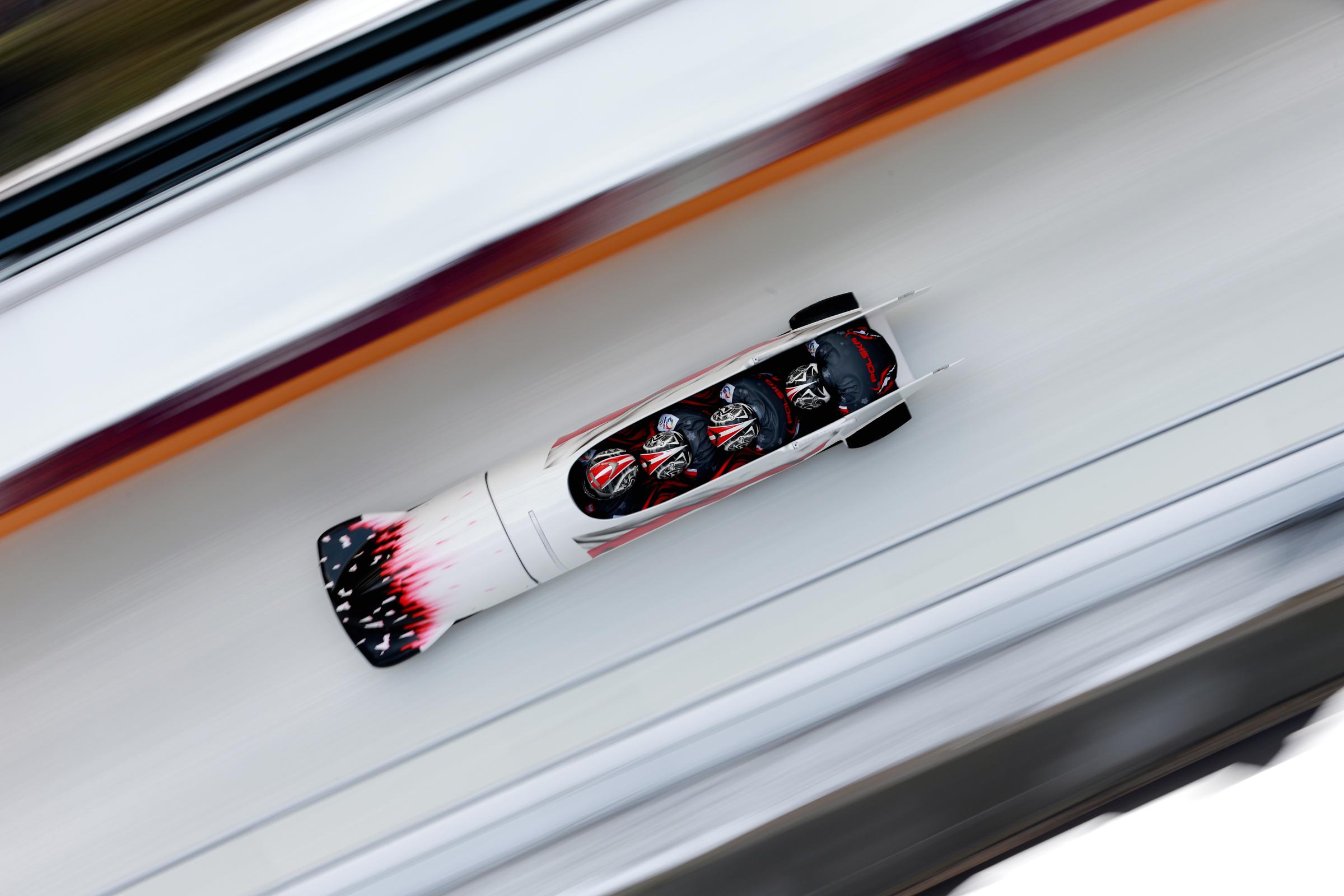For Winter Games rookies, the differences between the sledding events – luge, bobsled (or bobsleigh) and skeleton – can get blurry, just like a luger shooting past at 90 miles an hour.
The sledding events, however, are amongst the most exciting and potentially dangerous sports in the Winter Olympics, the high speeds and risks undertaken by the competitors making the events compelling viewing for spectators and viewers at home.
American luger Emily Sweeney’s terrifying crash during the final heat at the Pyeongchang Winter Games on Tuesday, after which she was taken to hospital, showed just how quickly things can go wrong.
“If you are a luge athlete, you give your entire life to this sport,” American luger Chris Mazdzer, who refers to luging as “ultimate sledding”, told CNBC.
And following Mazdzer’s silver medal win in luge last Sunday, the first luge medal of any kind for Team USA, there’s never been a better time to get into sledding.
Here’s what to know about the difference between the sledding disciplines:
What is Luge?

Sliding feet first down an icy track with only a helmet for protection, luging is not for the faint hearted.
Participants, who can compete in singles and doubles, hurtle down the track against the clock at 90 miles an hour on sleds that weighs just 50 pounds. Competitors can only change direction by angling their bodies.
Luge races are also one of the “most precisely timed sports” at the Games, timed to one thousandth of a second, according to the the PyeongChang 2018 official website.
The sport debuted at the Olympics in 1964, and is noted for its dangerous reputation: at the 2010 Vancouver Games, a day before the competitions began, Nodar Kumaritashvili, Georgia, was killed during a training run after flying off a track and crashing into a steel beam.
Doubles luging, although as equally dangerous as the singles, can appear comic at first: two participants lie on the sled, with one on top of the other, as they navigate their way down the course. The mens’ doubles, won by Germany’s Tobias Wendl and Tobias Arlt for the second time in a row, threatened to break the internet.
Mazdzer’s silver medal was Team USA’s first medal in the sport, although the sport has been dominated by Germany in recent games.
What is Bobsled?

Featured in the movie Cool Runnings, bobsledders compete in teams at the Olympics. The start, as with most of the sledding events, is crucial – racers run alongside the sled, pushing the handles before jumping into the sled. It’s the fastest of the three sledding sports, an competitors can reach up to 125 miles per hour.
The 2018 PyeongChang Games saw a series of firsts for the sport: Nigeria’s first-ever bobsled team, and Jamaica’s first women’s bobsled team.
The Jamaican women’s team followed in the footsteps of the iconic men’s team, who debuted in 1988 on the winter stage (and inspired Cool Runnings). However, their first Olympic contest hasn’t been without its share of drama. After the sudden departure of the team’s driver coach Sandra Kiriasis left the team without a sled, Jamaican beer company offered them a new sled.
The first bobsled event of the Games this year will be the two-man race, which takes place Feb. 19.
What is Skeleton?

Just as its name suggests, skeleton is a frightening sport. As in luge, participants compete on a single flat sled. The difference is that they travel down the icy course headfirst, lying on their stomach.
What makes the experience even scarier is that competitors stay aerodynamic by keeping their head down, their face barely an inch from the ice moving beneath them at 80 miles an hour.
It’s been around since 1884, when it was first tried out at St Moritz, according to CNN. It was first introduced at the 1928 Olympics, but the sport wasn’t fully integrated into the Olympics until 2002 when it was reintroduced, as it was previously considered too dangerous.
Why is the sport called skeleton? There’s some disagreement about that, according to the International Bobsleigh & Skeleton Federation. The name could be inspired by the skeleton-like shape of early sleds, or perhaps it’s an attempt at pronouncing “kjaelke,” the Norwegian word for “ice sled,” notes NBC Olympics.
Sungbin Yun of Korea won gold in Friday’s men’s competition, where Team Great Britain also won their first medal of the Games, when Dom Parsons hurtled to a dramatic bronze win.
You can watch the women’s on Feb. 17. The favourites include Germany’s Jacqueline Loelling and Tina Hermann -first and second in the women’s rankings respectively – and Great Britain’s defending gold medalist Lizzy Yarnold.
More Must-Reads from TIME
- Caitlin Clark Is TIME's 2024 Athlete of the Year
- Where Trump 2.0 Will Differ From 1.0
- Is Intermittent Fasting Good or Bad for You?
- The 100 Must-Read Books of 2024
- Column: If Optimism Feels Ridiculous Now, Try Hope
- The Future of Climate Action Is Trade Policy
- FX’s Say Nothing Is the Must-Watch Political Thriller of 2024
- Merle Bombardieri Is Helping People Make the Baby Decision
Contact us at letters@time.com